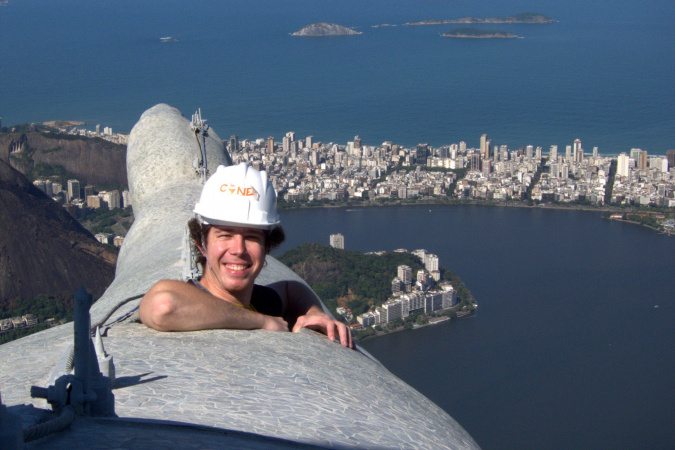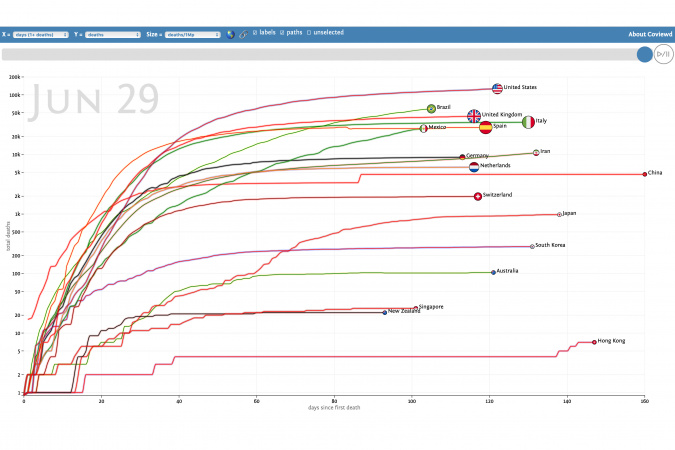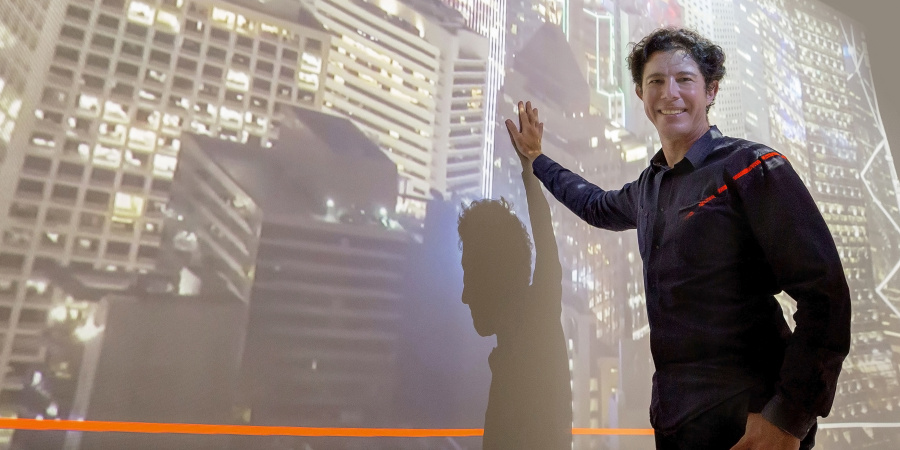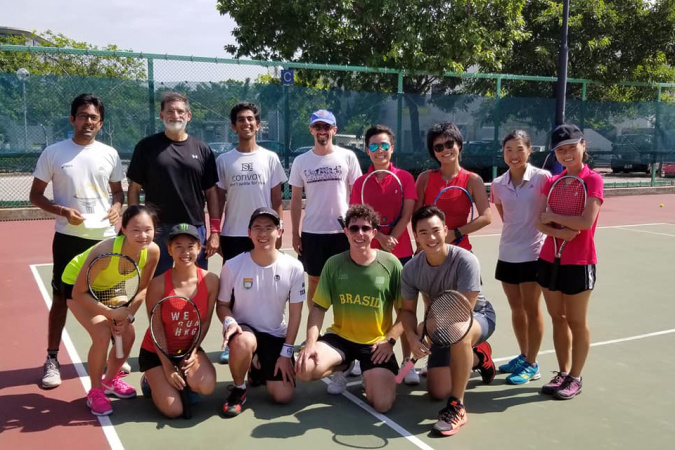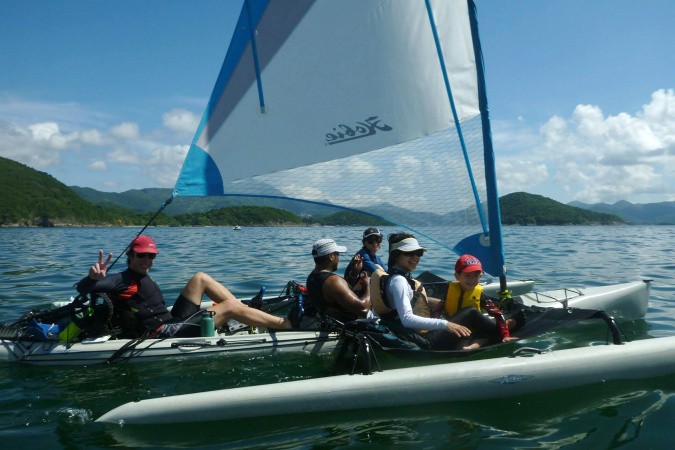Prof. Pedro SANDER Expands on His Passion for Computer Graphics
From working with renowned talent from around the world and participating in exciting computer graphics projects to coming up with new research ideas through teaching, Professor Pedro SANDER has had an invigorating journey at the HKUST Department of Computer Science and Engineering so far.
It’s a long way from Brazil to Hong Kong, but Prof. Pedro Sander says he sees many similarities between the city he now lives in and the town near Rio de Janeiro where he grew up. “Hong Kong actually reminds me of Rio – the natural beauty in a big city, the skyscrapers and the sea remind me of home,” he muses. “Hong Kong is very international, a melting pot of people from all over the world.”
Prof. Sander also experiences this cosmopolitanism at HKUST, which he joined in 2006, having earned a Master’s and a PhD from Harvard University, followed by a stint as a senior member of the Application Research Group of ATI Research in Marlborough, Massachusetts.
“When I first came to Hong Kong, I didn’t expect to be here this long,” he says. “I find the city extremely organized, it’s easy to get things done. HKUST has an impressive community, with advanced research areas and extremely bright students from Hong Kong and abroad. That combination of the strength of the university and the appeal of the city make it very attractive to academics and overseas students.”
Breakthrough in Graphics
At the School of Engineering, Prof. Sander has been involved in a number of promising research projects in the field of computer graphics. Most recently, he was part of a team of researchers using looping video content to form a gigantic panorama.
Panorama images are created by stitching together multiple high-resolution photographs. While putting together a panorama with video content is more challenging, the technology can be used in a wide range of areas from virtual tours in the travel industry to surveillance in the security sector.
“It was research from the ground up as there were no methods for creating a video panorama of this scale using raw video content,” Prof. Sander explains. “Some interesting projects in the past have taken smaller datasets and looped them together. The task we set ourselves was to do this on a massive scale.”
They ended up fixing a professional 4K video camera onto a robotic arm to capture spatially overlapping eight-second videos, which were then processed to stabilize the content and ensure consistency in brightness and color. The team devised an optimization method to stitch the videos together into a gigantic high-resolution panorama. They also developed an interface to enable authors and viewers to edit specific areas of the video.
In the next phase of the project, the team is considering the use of drones to capture the videos, which involves challenges in camera stabilization. “Another potential project is to try to embed smaller videos into different parts of the panorama, adding sound and other interactive elements, or even real-time dynamic content so people can zoom into the image and interact with it,” Prof. Sander says.
Teaching Inspires Research
The COVID-19 pandemic offered him an opportunity to combine his love of the visual with a burning global issue in the classroom. “In devising our programming assignments, we try to think of current events and problems that may interest students to link classroom learning with the wider world,” he shares.
Thus, for the introductory C++ programming course he co-teaches with Dr. Cecia Chan and Dr. Cindy Li, they worked with teaching associate Mr. Wallace Mak to develop programming assignments asking students to process the COVID-19 case data from the Center for Systems Science and Engineering at Johns Hopkins University.
“The idea was to explore the wealth of available data to generate some statistics that allow students to analyze the current outbreak situation in different countries,” he says. Prof. Sander then developed a web-based motion chart that loads and displays the statistics from student assignments to help them visualize trends, and went on to come up with a more advanced version of the visualization tool online. “It became a hit online, with several people using it daily to explore the statistics and better analyze the current situation in several countries,” he says.
This project inspired a further investigation into how to assign optimal, mostly unique colors to countries in the visualization. “I am now collaborating with Prof. Guilherme FONSECA, from Aix-Marseille University, who is developing an algorithm to automatically assign color visualization based on the national colors of each country. We plan to further explore other aspects of the visualization as well.” The project is an encouraging example of how research can not only inspire teaching, but how the classroom can spark new research ideas as well.
What is his pedagogical philosophy? “What I cherish most in academia is the opportunity to enable possibilities where students work on projects that they are passionate about and they move on with their careers and do very well in their chosen fields,” he shares. “This process of watching students from the beginning of their trajectory all the way to fulfilling their career dreams is what’s most satisfying.”
Attracting the Best
With the recent rise in big data and artificial intelligence, admission into the department is no easy feat. “What is exciting about our students at both the undergraduate and postgraduate level is how motivated they are,” he observes.
Faculty members of HKUST Computer Science and Engineering are renowned in a broad range of fields, covering almost every area of computing. Irrespective of their area of interest, students can find advisors in their research field in the department.
Apart from the HKUST community, what kept Prof. Sander in Hong Kong and HKUST for more than 14 years? Prof. Sander is a foodie who enjoys exploring the cuisines of the world available in Hong Kong and participating in various sports on campus. “These were a lot of fun and led to many friendships with alumni in Hong Kong. I particularly enjoy the many tennis events we organized with the student team.” He is eagerly awaiting the opening of the new HKUST Water Sports Centre where students, alumni and staff will be able to try dragon boating, windsurfing and other water sports.
He strongly believes that, as a relatively young university, HKUST is well positioned to attract and integrate people from all over the world. “We have faculty and students from everywhere. This has encouraged me to stay on for so long even though Hong Kong is so far away from Brazil.”
